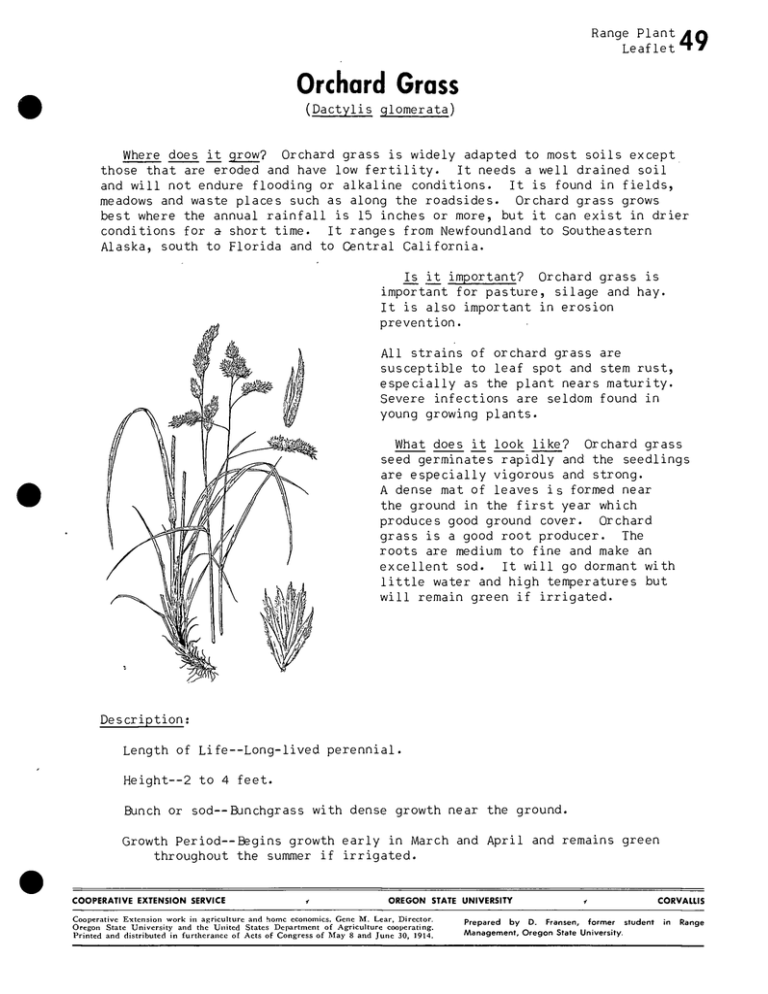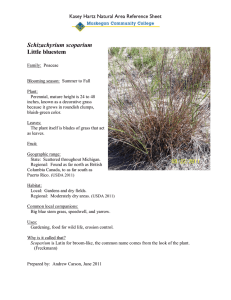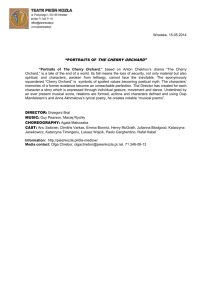Orchard Grass
advertisement

Range Plant ^Q Leaflet ^' Orchard Grass (Dactylis glomerata) Where does it grow? Orchard grass is widely adapted to most soils except those that are eroded and have low fertility. It needs a well drained soil and will not endure flooding or alkaline conditions. It is found in fields, meadows and waste places such as along the roadsides. Orchard grass grows best where the annual rainfall is 15 inches or more, but it can exist in drier conditions for a short time. It ranges from Newfoundland to Southeastern Alaska, south to Florida and to Central California. Is it important? Orchard grass is important for pasture, silage and hay. It is also important in erosion prevention. All strains of orchard grass are susceptible to leaf spot and stem rust, especially as the plant nears maturity. Severe infections are seldom found in young growing plants. What does it look like? Orchard grass seed germinates rapidly and the seedlings are especially vigorous and strong. A dense mat of leaves is formed near the ground in the first year which produces good ground cover. Orchard grass is a good root producer. The roots are medium to fine and make an excellent sod. It will go dormant with little water and high temperatures but will remain green if irrigated. Description: Length of Life—Long-lived perennial. Height—2 to 4 feet. Bunch or sod—Bunchgrass with dense growth near the ground. Growth Period—Begins growth early in March and April and remains green throughout the summer if irrigated. COOPERATIVE EXTENSION SERVICE OREGON STATE UNIVERSITY Cooperative Extension work in agriculture and home economics. Gene M. Lear, Director. Oregon State University and the United States Department of Agriculture cooperating. Printed and distributed in furtherance of Acts of Congress of May 8 and June 30, 1914. Prepared by D. Fransen, former student Management, Oregon State University. CORVAUIS in Range How does it spread?—By rapidly developing seeds. Leaf shape—Broad flat leaf blades about -g- inch wide and rough to the touch and strongly flattened leaf sheaths. How to use it--Orchard grass is excellent for both hay and pasture. It will produce a fair amount of hay on the thinner, dry uplands but becomes woody if not cut soon after blooming. Orchard grass is at its best when used in mixtures with legumes since it begins growth early and remains throughout much of the summer. It is highly palatable for both sheep and cattle. Does it look like anything else? No, the spikelets crowded in one-sided clusters are easy to recognize and the strongly flattened leaf sheaths and lower culms are a "dead give-away".





